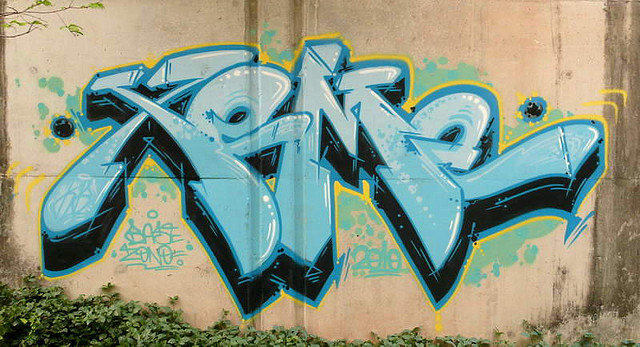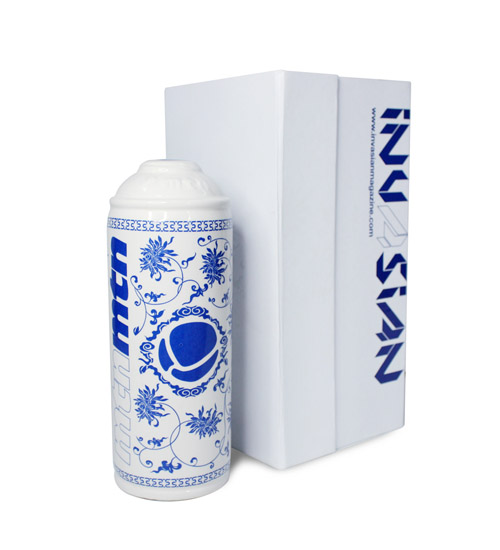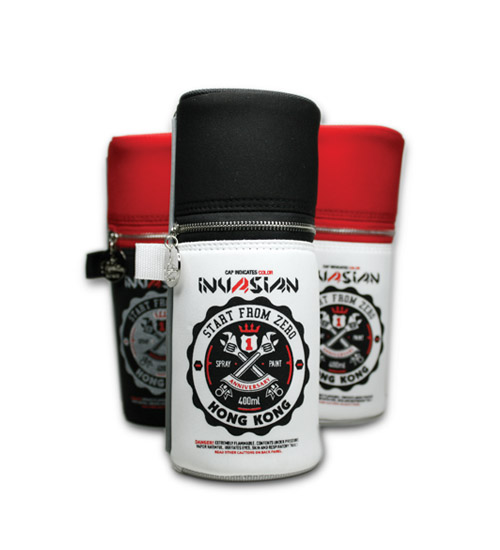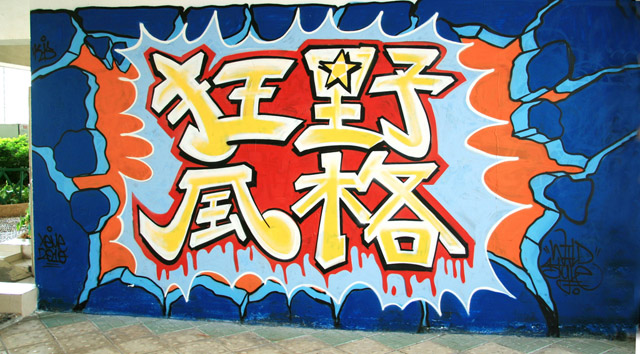Xeme Interview
by Matthew J
Bombing Science:You and I did our first interview together back in ’08. Briefly bring us up to speed as to what has happened in the life of Xeme since then? How have things changed during the past two years?
Xeme: I’ve been working. I’ve been working on some events around Asia, called “Wall Lords”, which is pretty much a huge graffiti jam. Aside from that, I’ve also been busy pushing the magazine, traveling, painting, etc.
Check out: www.wall-lords.com

Bombing Science:Ok, so let’s look at the magazine and it’s relation to your art. Now that Invasian is off and running, how active are you the “graff-game”? Does running the magazine stunt your activity? Or do you juggle both?
Xeme: It’s pretty much the same, man. I’m still out trying to paint every week and keep the scene alive a bit. To be honest with you, running the magazine gave me more passion to paint actually. By looking at good works from people around Asia makes me want to do better; it’s inspiring.
Bombing Science:I want to know a bit about the ‘growing pains’ surrounding Invasian Magazine. At the moment, you’re the only Asian-based graffiti publication and have been building a solid network. I’m curious as to how you would describe the progression [of the magazine] these past few years. How has the battle?
Xeme: It’s quite hard for us to have people submitting their stuff. Language is a problem and even if they do contribute it’s never continuous. People tend to stay in their own country a lot, too. It’s not like Europe where you can hop a train and go around place to place. We’re less wealthy than the Western countries, so it’s harder for local kids to go outside their country and be seen, which makes their graf culture fairy enclosed here.

Bombing Science:What advice, if any, would you give to those Asian writers who are trying to do their thing –artistically- despite the lack of exposure? What would you tell them is needed to make their dream come true and get their art out?
Xeme: You’ll need a lot of passion that’ll keep you running with it; whether things are going good or bad, you’ll have to keep it [the passion] going.
Bombing Science:This leads us into the premise of ownership. You’re among the first group of writers from Hong Kong to be heavily involved in its graffiti scene. Fast forward some nine years into the future and you’re one of the first publishers/owners of an exclusively Asian graffiti magazine. How did the idea to start Invasian come about? Where does this entrepreneurial spirit come from? There are many artists who have the talent, but no ambition to capitalize on it. Where does your motivation come from?
Xeme: I can’t say I’m in the first group of writers in Hong Kong. There’s still a bunch of other people that started earlier than me. I just happened to be one of the very few that kept writing in Hong Kong.
Invasian came out of passion. I and my pa! rtners did it because we want to push graff in Asia and at the same time bridging people together.
We never thought we could make a living out of it. I could make more money flipping burgers than selling magazines but at least we’re doing something that we enjoy.
Bombing Science:So going back to the lack of exposure within Asian graffiti how important is it for you to see Invasian Magazine branching out into these underexposed areas? Ownership seems to be the key to success. Do you feel people are taking the idea of self-ownership seriously?
Xeme: For sure the more audience we can reach the better it is for us all. I think a lot of people are open-minded in regards to ownership. It’s just that differences in technology, languages or other barriers may make them appear to be closed off or isolated.
Bombing Science:Here in the Canada, we have very little insight as to what is happening in Asian graffiti. You have a vantage point we don’t so I want to ask which countries do you see as being the most slept-on? And which nations do you see as being the “pearls” of Asia?
Xeme: I mean the whole Asia is generally “slept-on”, period. It’s really hard to pick the most [slept-on] because in a lot of the countries, people aren’t aware of the scenes. Quickly I would list Thailand, Taiwan, Indonesia, and China … just to name a few. Each country has their own characteristics in my eyes. It’s really hard give the crown to any country. But just to give you got some ideas, countries like Japan, Taiwan, Thailand and Philippines got a cool bombing scene. Thailand and Korea has some of the best piecing writers in Asia. And then you hav! e countries like China, Indonesia that have a bigger population of writers working on several styles. The talent is spread out and every place has a signature style.

Bombing Science:I remember your style of graffiti being very diverse; apart from the English alphabet you use the Chinese characters. How important is it for you to use those characters? I doubt many writers are doing it.
Xeme: I use my own language characters because I want to rep my country and my culture. At times, I felt that using Chinese characters would be less boring than the typical way I could write with (the English alphabet).
Bombing Science:Artistic longevity seems to be quite limited not only in Asian, but North America, too. You mentioned before how many artists are here one day and gone the next. Has the problem improved at all, these last few years? What do you attribute to this “short-term” career path? Not enough exposure? Not enough dedication?
Xeme: The roots of graffiti or urban culture! haven’t been planted deep enough in Asia.
A lot of people don’t have the passion and energy to keep it alive.
Some might jump into other related fields like designs or fashion and completely dropped graffiti. Or some would have thought graffiti is just a quick hobby, and loses interest over time. It hasn’t been much of a difference in my own city. Still like 10 active writers in a 7 million population. But I can see some countries have more people holding it down and keeping their [graff] scene alive.

Bombing Science:This leads me to the next question: What has kept you so committed to this art form? You’ve been doing this for nearly ten years and now with the magazine and other projects on the go, it appears that you’ll be sticking around for a lot longer. Why do you think “Xeme” hasn’t walked away from the scene?? What do attribute to your longevity?
Xeme: I did the magazine and all the things surrounding Invasian because of graffiti. If I stop writing, I can’t back up the brand’s identity. Invasian will for sure stop if I stop writing.

Bombing Science:Previously you mentioned the importance of using Chines! e symbols in your pieces. You stated the reason you felt so driven to use the symbols was due to the fact that many artists felt [the symbols] are too difficult to write. You’ve been using the symbols and I wanted to know if your example has inspired other writers to start using them, as well?
Xeme: I’m not sure if I really did inspire them, but a lot of the Chinese writers have done at least some pieces with Chinese characters for sure. It’s pretty cool to see people from different countries bring their own language(s) into the art.
Bombing Science: Do you have any big developments planned for Invasian? What’s next?
Right now, we’re working on the 5th issue and few other collabs with different brands. Stay tuned for that 🙂
Bombing Science:Last question: where do you see Invasian Magazine standing in the next 5 years?
Xeme: It’s really hard to say man. In Chinese we say “We walk and then think about the next step” (見æ¥è¡Œæ¥)。
I hope to build up a more solid network in Asia and people can start their own mag in their own country and spread it around.

Bombing Science:I thank you for taking the time to do this, Xeme. Before we end this piece do you have any last words for the people reading this?
Xeme: I would like to thanks Bombing Science once again for having me here.
Also, thanks to Sinic, Redy and my Kong boys for keeping me on track. And everyone that showed us love in the past years.
—
For more information, go to:
Invasian Magazine
Wall Lords
www.wall-lords.com


